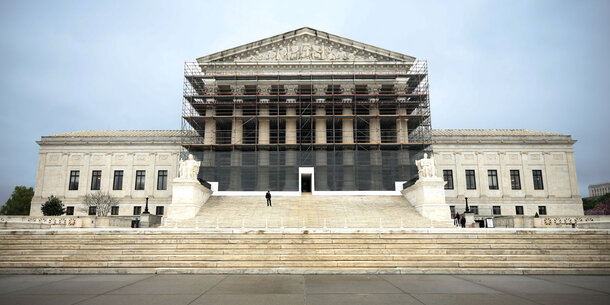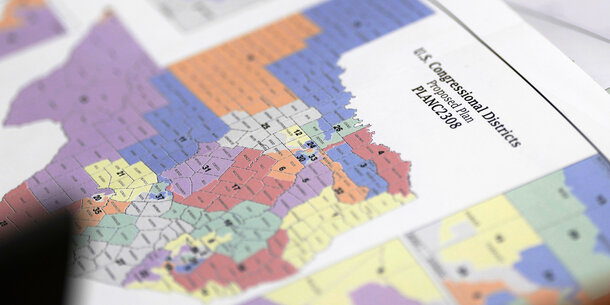UPDATE: On September 5, a federal court rejected Alabama’s latest voting map and said that it would create a new one that complies with the Voting Rights Act.
Welcome to Massive Resistance, version 2023.
Black voters in Alabama won a major victory at the Supreme Court in June. The high court ruled that Republican lawmakers violated the Voting Rights Act when they redrew the state’s congressional map after the 2020 census and failed to create a second Black district.
The ruling was sweet — in recent years, most voting rights cases at the Supreme Court have not gone well for advocates. This summer, in fact, is the 10th anniversary of the Court’s infamous decision in Shelby County v. Holder, which gutted an important provision of the Voting Rights Act that subjected states with a history of discrimination to extra scrutiny when adopting new redistricting plans or changing their election laws. With that track record, most observers were preparing for the worst as a decision in the Alabama case drew near.
Instead, Chief Justice John Roberts’s 5–4 opinion not only affirmed the lower court’s decision against Alabama but did so with vigor, strongly confirming the Court’s earlier precedents in the area.
If you stopped watching there, you might be forgiven for thinking that Alabama, thoroughly chastened, would have quickly gone about redrawing its congressional map to add a second district “in which Black voters either comprise a voting-age majority or something quite close to it” (to quote from the trial court’s opinion about what is needed to fix the map).
But no. Rather, in a move reminiscent of the state’s open defiance of federal court rulings in the 1960s ordering desegregation, the Alabama legislature passed a map with one Black-majority district and a second district — supposedly fixing the problems found by the Court — in which Black voters constitute merely 40 percent of the population. The new map was speedily signed into law by Gov. Kay Ivey (R), who said in a statement that the legislature knew “our state, our people and our districts better than the federal courts or activist groups.”
Well, spoiler alert: In a state where voting is as starkly racially polarized as Alabama, a district where only 40 percent of voters are Black will elect the white community’s preferred Republican candidate time and time again. (Fun bonus fact: Alabama’s Solicitor General Edmund LaCour, who is representing the state in court in litigation over the map, is apparently moonlighting as the state’s map drawer.)
Last week, the lower court overseeing the Alabama case held a hearing to decide whether to approve the state’s new map or order a court-appointed special master to redraw it. Another round of appeals to the Supreme Court is all but inevitable.
And the flouting of courts isn’t just happening in Alabama. In Louisiana, where a federal court similarly ruled that the state needs to create an additional Black congressional district, lawmakers are taking steps to avoid redrawing the map by relitigating “concerns” about the constitutionality of the court’s ruling.
So what’s Alabama’s (and Louisiana’s) endgame?
Part of it is politics. With control of the U.S. House on the line in 2024, Republicans are fighting for every last gerrymandered seat. House Speaker Kevin McCarthy is reported to have personally called Alabama lawmakers, urging them not to pass a legally compliant map. It also has become clear that Republican elected officials and operatives aren’t giving up on attacking the Voting Rights Act or on their vision of a “color-blind Constitution.”
Ten years ago in Shelby County, Chief Justice Roberts wrote, “Things have changed in the South.” In many ways, they have. But, sadly, Alabama and Louisiana illustrate some of the ways they haven’t.



